70 years of the Fender Stratocaster means 7 decades of legendary guitars, and 7 decades of rock and pop history. Check out this story to find out how it became the most well-known electric guitar in the world.
1954: The Birth of a Classic
California, the beginning of the 1950s. A small business by the name of Fender starts selling electric guitars and amplifiers to go with them. The west-coast music scene is in a state of upheaval, and demand for electronically amplified guitars is exploding. Company founder Leo Fender puts the Telecaster, a relatively affordable basic model onto the market, and most importantly, it’s one of the first guitar models to be mass produced. Then he releases the Precision Bass, a pioneering instrument, which replaces the upright acoustic bass, changing the composition of music groups forever.
Both models are what are known as solid body guitars, meaning the bodies are made of a solid piece of wood, generally ash or alder, and have a headstock with all the tuning pegs placed in a single row, which make them easier to work with. The Precision Bass has a longer neck in order to produce deeper sounds, which made it necessary to position the strap more in the middle. To accommodate that and make it possible to reach higher notes on the neck, Fender added cutaways under and over the neck and a horn over the fretboard to position the strap peg better. These elements were all taken over to the Stratocaster and make up the typical shape of an electric guitar. Fender took inspiration for the shape from the classic designs of Cadillac cars.
The Stratocaster then took it a few steps further: the body was made flat and the edges were rounded to make it more comfortable to wear with the strap. It was also equipped with three single coil pickups, versus two on the Telecaster, and a vibrato system with the sometimes confusing name of Tremolo, which makes it possible to raise the pitch of the notes played and give a bending effect.
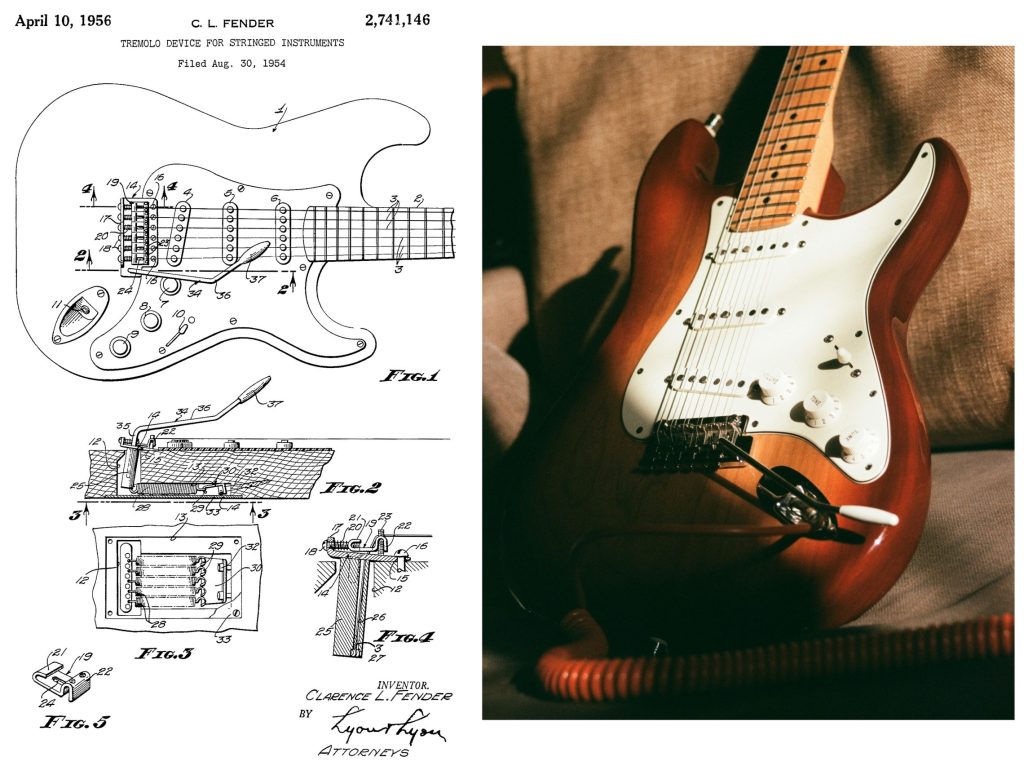
Signature Elements of the Stratocaster and Modifications
Wood
In the 1950’s, Fender guitars mostly had bodies made of ash, while the neck and fretboards were made of oak. In the 1960’s, many of the bodies began to be made of alder. Starting in 1958, the fretboards started to be made of rosewood.
Finish
The original Stratocasters were made with the now legendary Sunburst finish, with the lacquer color fading from a light wood color on the inside to a dark almost black tone on the outer edge. Starting in 1958, they began working with car paint manufacturer DuPont to offer a dramatically expanded range of colors.
Headstock
The shape of the Stratocaster’s headstock has varied over the years. The basic asymmetrical shape with a single row of tuning pegs has remained constant though, with only the size and inscriptions have changed. While the original headstock was relatively slim, it grew in size during the CBS times starting in 1965, which made it possible to increase the size of the font.
Pickups
The standard Stratocaster has three single-coil pickups, which can be selected using a small lever, which originally had only three levels, one for each pickup. Some guitarists, however, would use rubber bands or other ad hoc solutions to get the lever to stick on in-between positions. In 1977, they made the first five-way selector, which allowed the different pickups to be mixed together. some models have a humbucker pickup on the bridge, which rock guitarists appreciate for its more powerful sound.
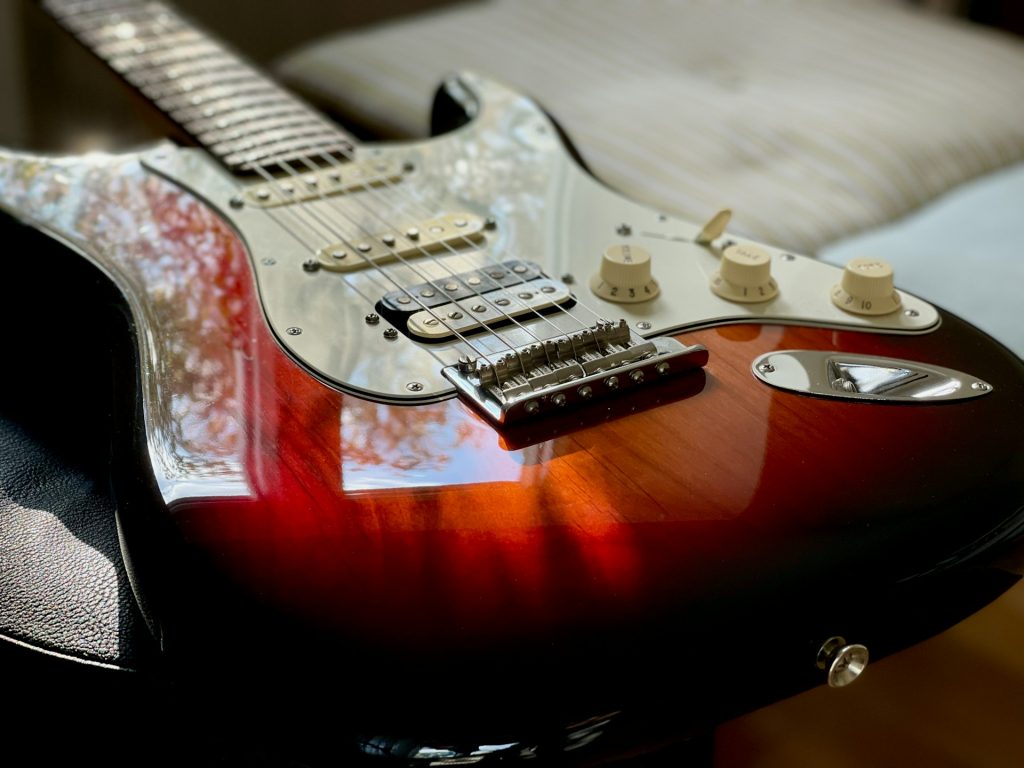
Bridge and Tremolo
The Stratocaster allows many ways of altering the tone produced by the strings. One method is the Tremolo vibrato system built into the bridge with the removable bar, which stretches the strings to raise the tone in a bending effect. The first version (without a bar) was not a success with musicians in 1953; the end version though, was cause for enthusiasm, because it offers access to an entirely new audio spectrum, grounding the Fender Stratocaster’s reputation as an extremely versatile instrument.
Tip: Want to learn to play guitar yourself? Check out our electric guitar guide to learn the basics.
How the Strat Became the Most Famous Electric Guitar in the World
The success of the earlier Telecaster put Fender on the map, and the guitar maker went back to the drawing board, incorporating feedback from professional musicians to create the Stratocaster, which would be released in 1954. From there, the new possibilities unleashed by its design and the innovative amps Fender also produced would go on to transform popular music. Expanding from its original base of western swing into a harder, more technical and innovative instrumental sound of artists such as Dick Dale, it would finally attain national and even global profile a few years later with the rocket-like ascent of Buddy Holly. And it was shortly after that, in 1959, that guitar player Hank Marvin first brought the Strat to promininence in the UK with his instrumental band the Shadows. George Harrison would start playing a Strat in 1965, bringing it further fame. But the absolute zenith of that period must be its near exclusive use by Jimi Hendrix. Being left-handed, he turned his standard right-handed guitar upside down and put in the strings in the opposite order. He would also sometimes use different pickups or other mechanics. One of his most famous performances, full of vibratos and feedback, came at the 1969 Woodstock Festival, where he played a white 1968 CBS Stratocaster:
Eric Clapton started playing a Stratocaster in 1970. From 1973 to 1985, he played a Strat with black finish named Blackie, which was assembled from the best parts of three Strats selected by Clapton himself. And since 1988, when Fender started producing their first signature model, the Eric Clapton Stratocaster, he has been playing one live.
Probably the most famous rock riff ever played on a Fender Stratocaster is the chorus of Smoke on the Water by Deep Purple, played by Ritchie Blackmore.
The relaxed guitar sound of Mark Knopfler, which was a signature of Dire Straits, also came from a Stratocaster.
Many of the biggest names in rock and pop are known to have played a Stratocaster such as Jeff Beck, David Gilmour, Eddie Van Halen, Dave Murray of Iron Maiden, Rory Gallagher, Stevie Ray Vaughan, or Chris Rea. They all contributed to making the Fender Stratocaster one of the most popular electric guitars on the market.
Tip: Want to know more about the first few years of the Fender Stratocaster? Check out the story on Fender’s website.
Fender x Teufel: Legendary Sound, Iconic Design
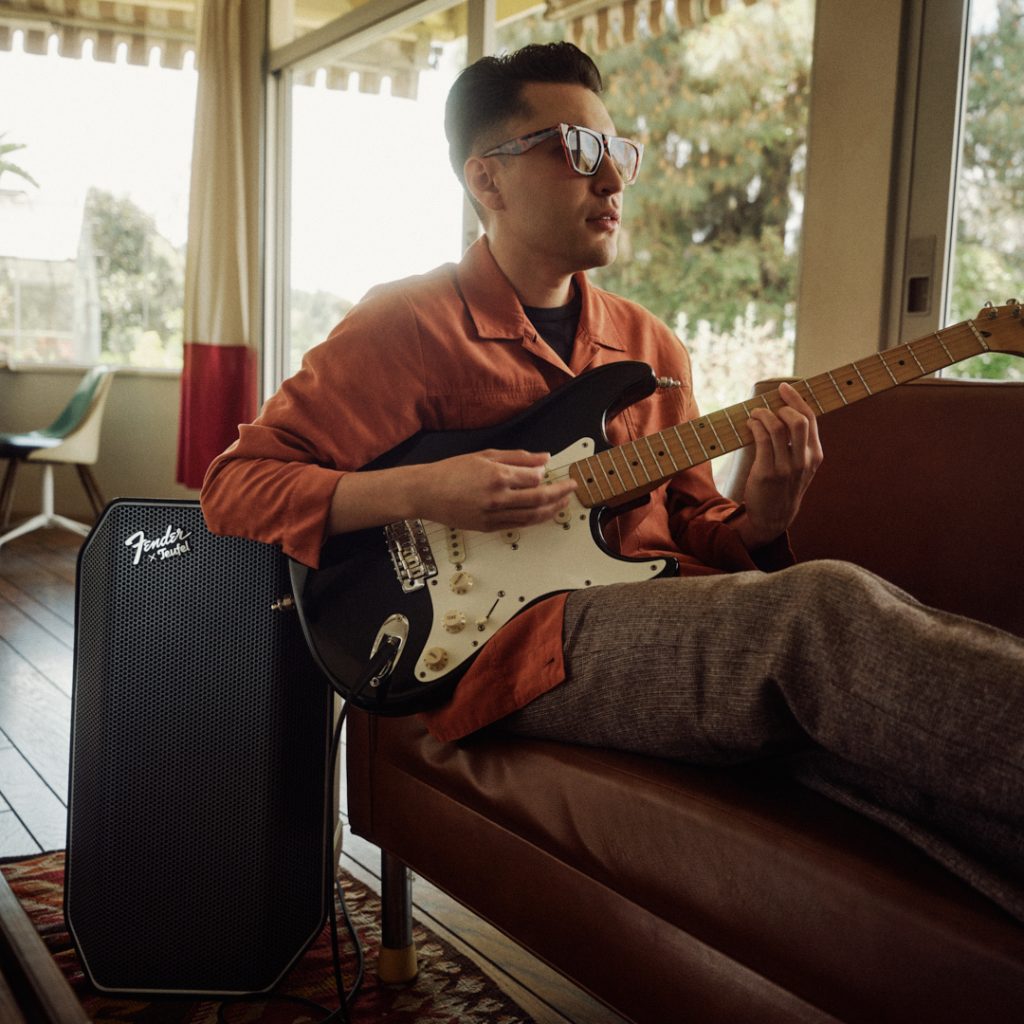 Opens in new tab
Opens in new tabFender and Teufel are a perfect match for one another, and the Fender x Teufel Collection is the perfect way to express your passion for first-class sound and vintage style. We took our three most popular Bluetooth speakers, the ROCKSTER AIR 2, the ROCKSTER GO 2, and the ROCKSTER CROSS, and gave them a new design reminiscent of that of Fender’s iconic amps. You can find them here – here to be heard:
Fender itself is releasing a quintet of special editions to celebrate their anniversary – the 70th Anniversary Stratocaster Collection, which you can find iOpens in new tabn theOpens in new tab Fender ShopOpens in new tab.
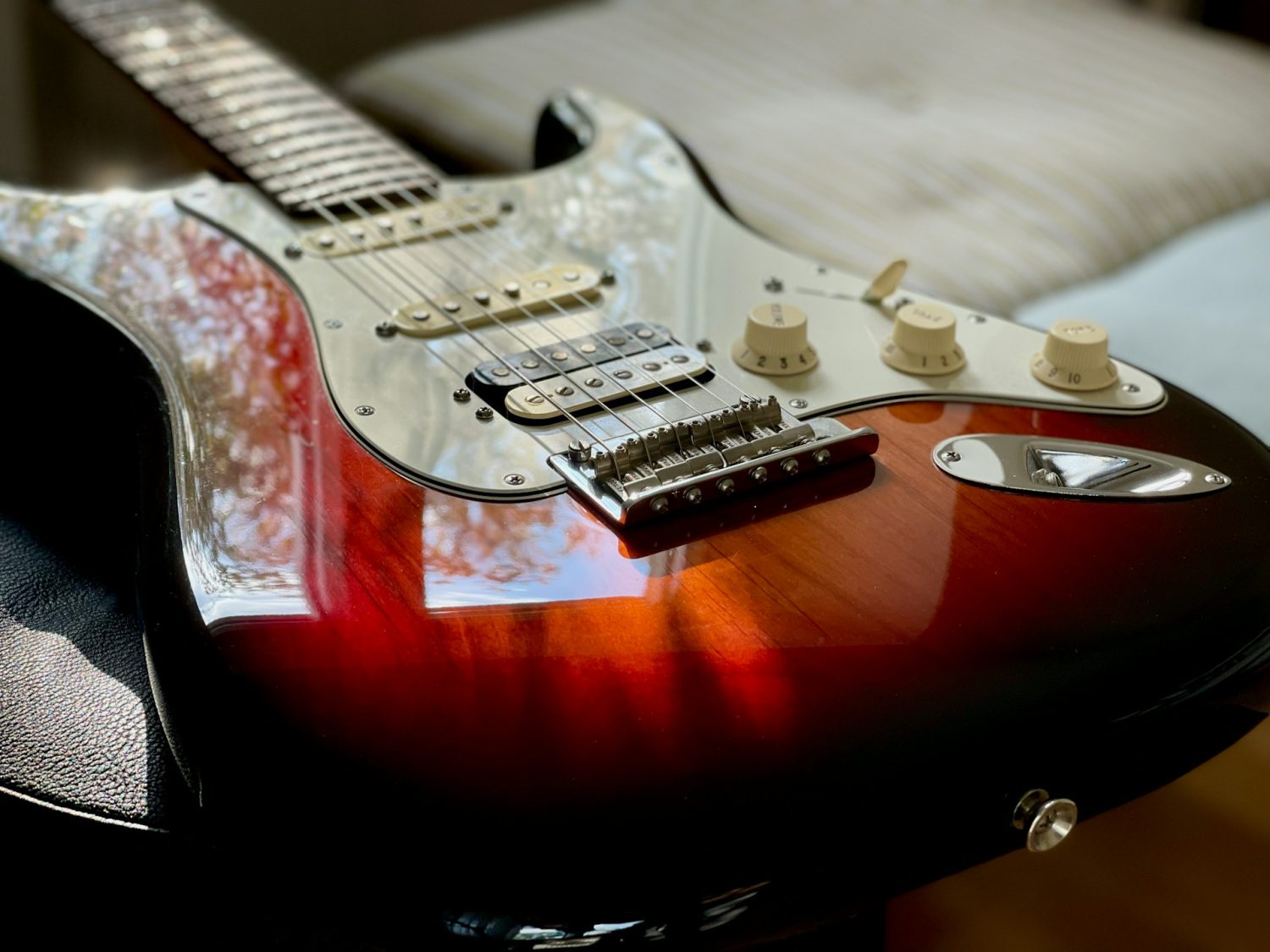

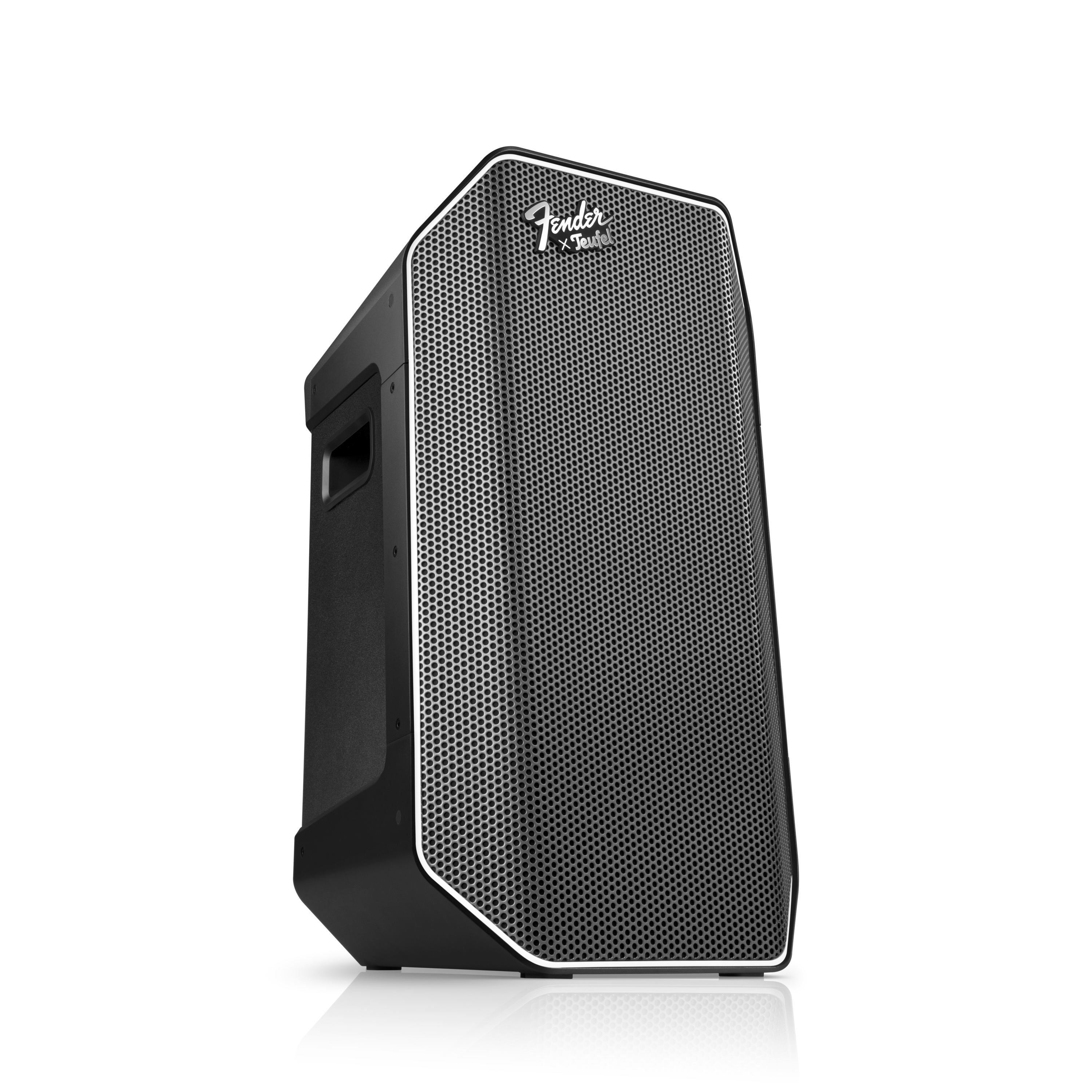

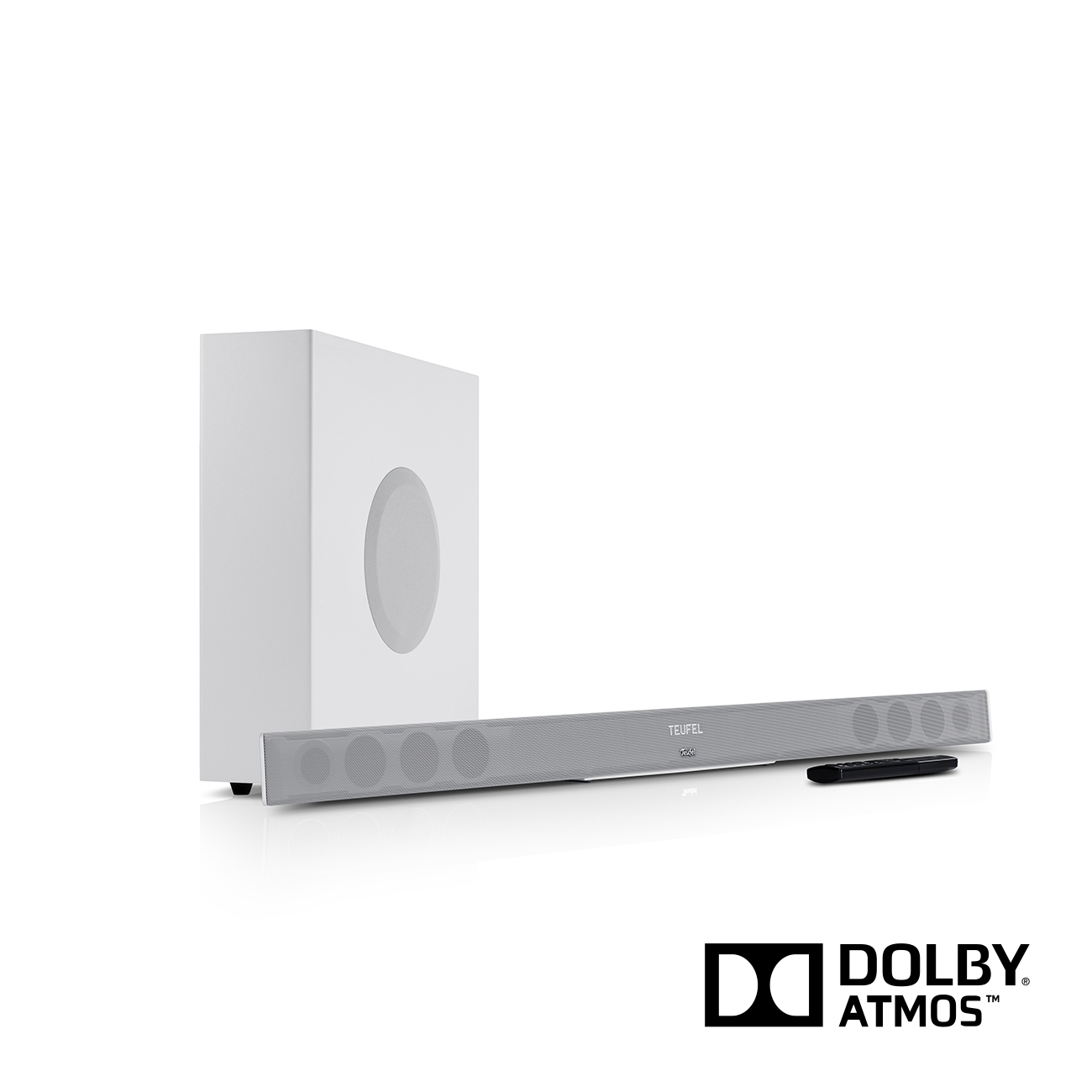

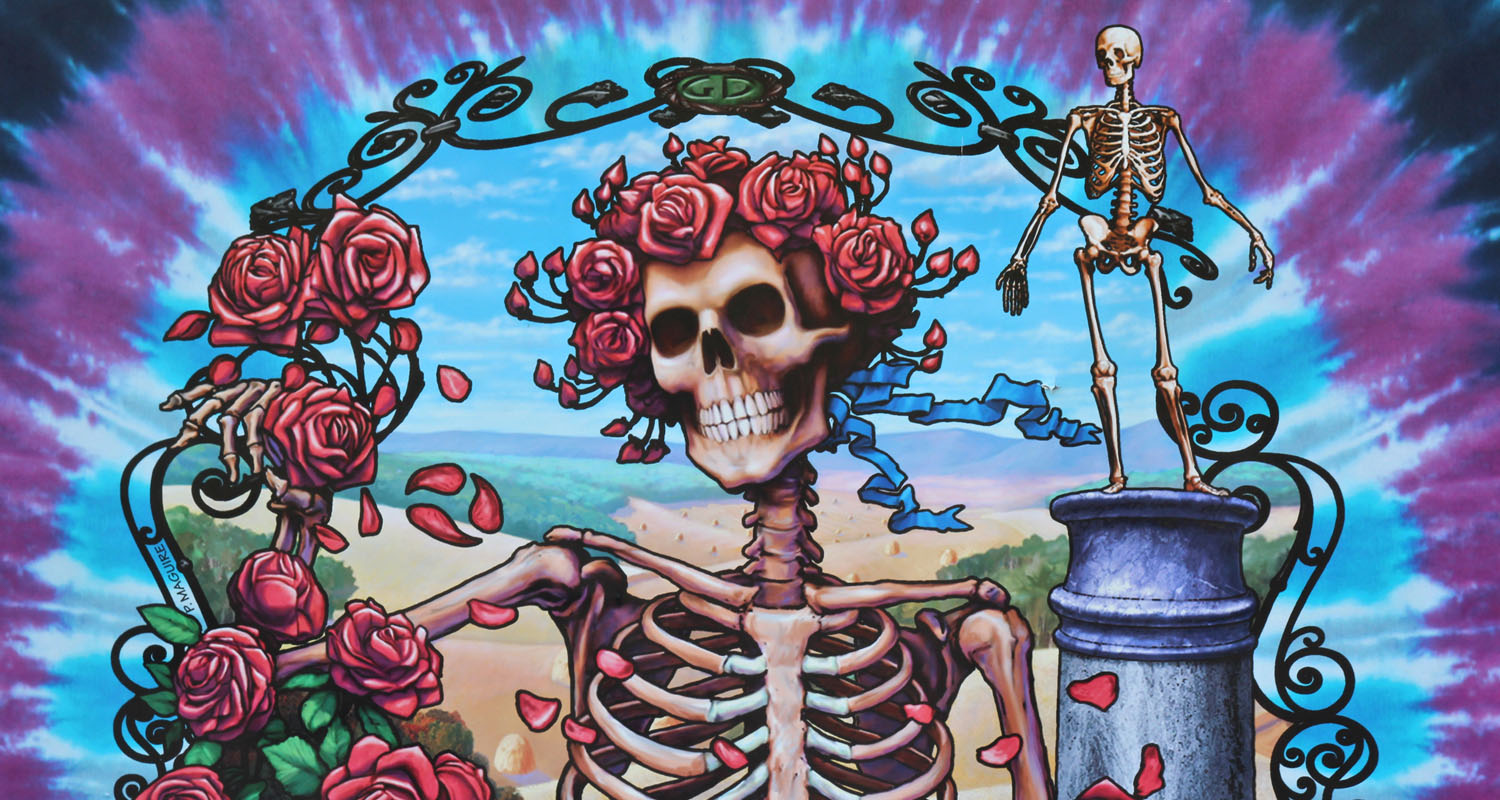
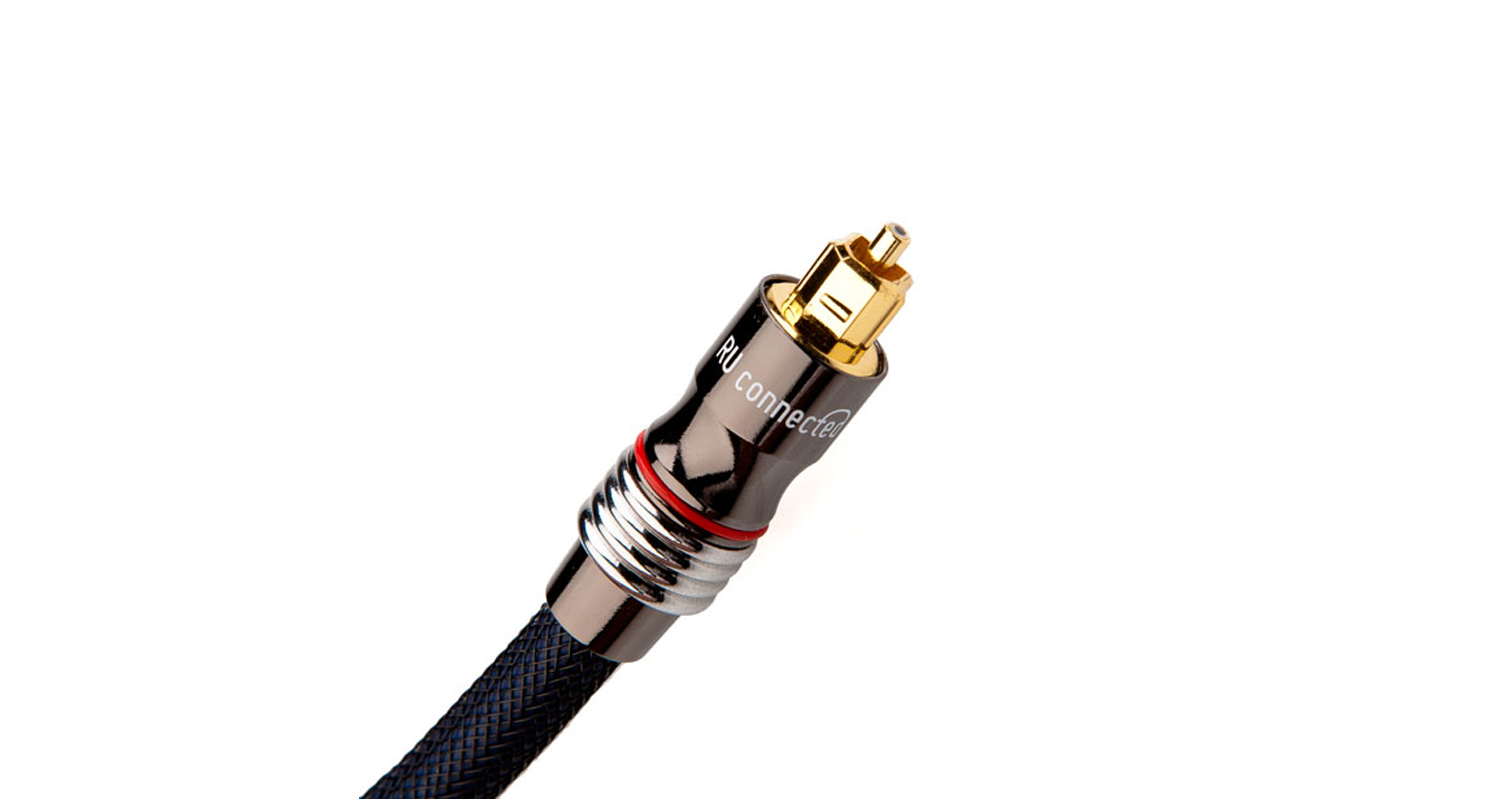
Leave a Reply